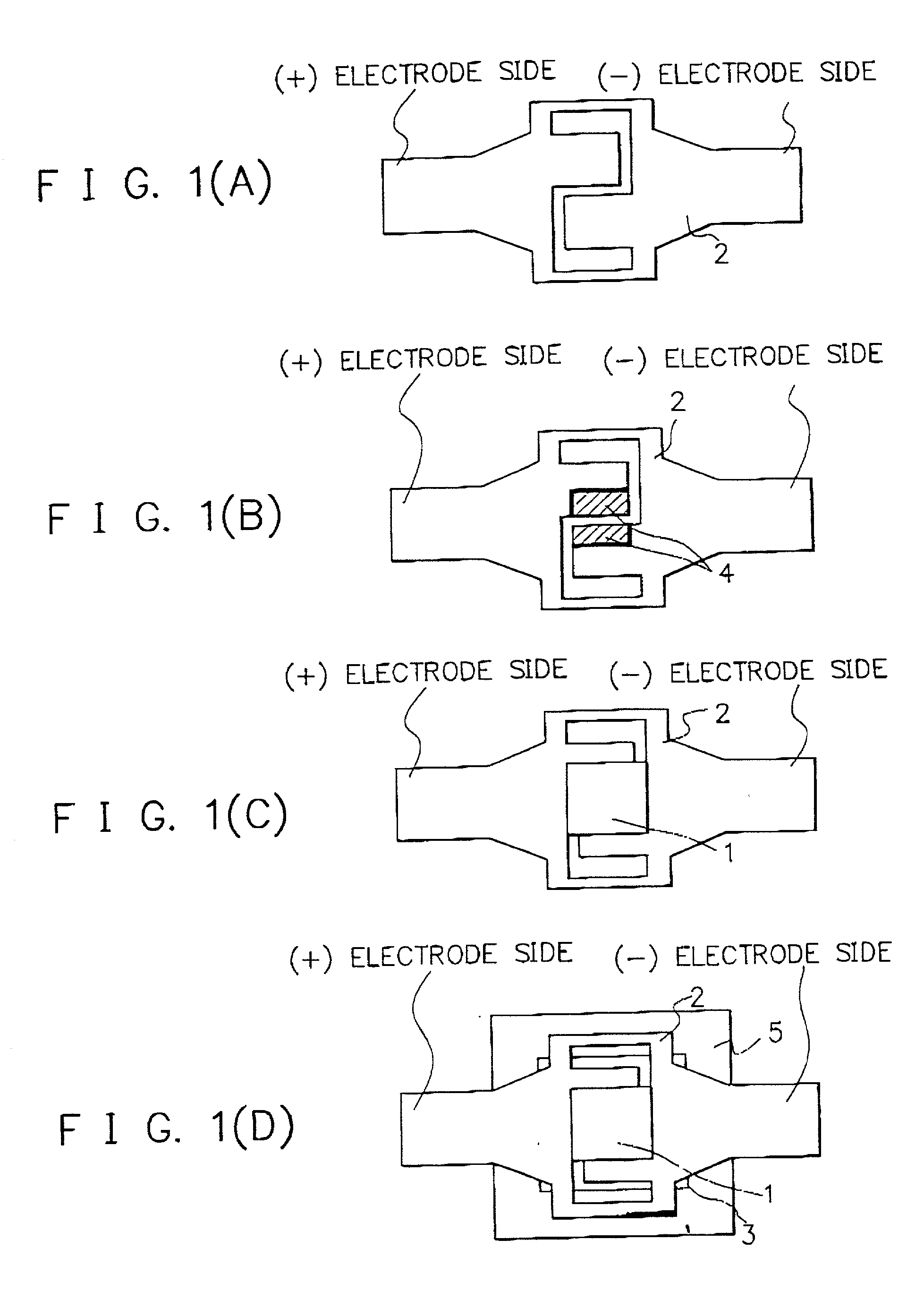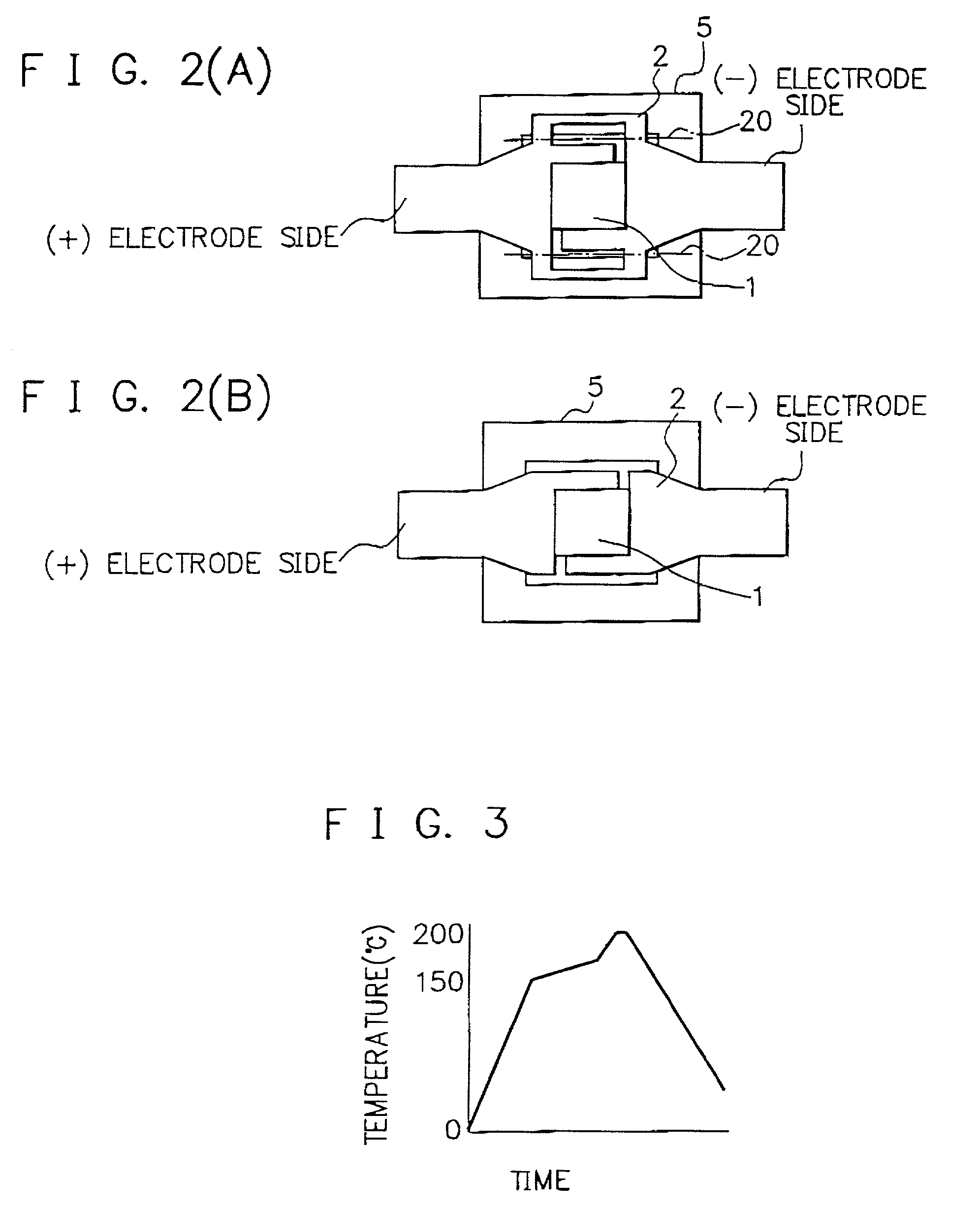Mounting structure and mounting method of a photovoltaic element, mounting substrate for mounting a semiconductor element and method for mounting said semiconductor element on said mounting substrate
a technology of photovoltaic elements and mounting structures, which is applied in the direction of photovoltaic supports, pv power plants, transistors, etc., can solve the problems of high cost of photovoltaic elements, material cost of solar cells (the photoelectric conversion elements) constituting solar cells, and the cost of retaining substrates on which the photovoltaic elements are mounted is expensive to be similar to or more than the cost of the photovoltaic elemen
- Summary
- Abstract
- Description
- Claims
- Application Information
AI Technical Summary
Benefits of technology
Problems solved by technology
Method used
Image
Examples
examples 1 to 5
OF THE FIRST ASPECT OF THE PRESENT INVENTION
example 1
[0157] FIGS. 1(A) to 1(D) and FIGS. 2(A) and 2(B) are schematic views for explaining an example of a mounting structure and a mounting method of a photovoltaic element.
[0158] In FIGS. 1(A) to 1(D) and FIGS. 2(A) and 2(B), reference numeral 1 indicates a square-shaped photovoltaic element comprising a single crystal silicon material and which has a size of 12 mm.times.12 mm and a thickness of 125 .mu.m. The photovoltaic element 1 has a reflection preventive film (not shown in the figure) having a textured surface structure formed on the light receiving face thereof. In addition, The photovoltaic element 1 has a pair of power output electrodes (not shown in the figure) provided on the non-light receiving face thereof such a state as shown in FIGS. 15(A) to 15(D). Each of the two power output electrodes comprises a 10 .mu.m thick Al electrode deposited with an Au film having a thickness of about 0.01 .mu.m. And the two power output electrodes are electrically connected respectively to ...
example 2
[0171] FIGS. 5(A) and 5(B) and FIGS. 6(A) and 6(B) are schematic views for explaining an example of a metal body on which a photovoltaic element is mounted and a mounting method of said photovoltaic element, and which illustrate part of a continuous lead frame 6.
[0172] In FIGS. 6(A) and 6(B), reference numeral 1 indicates a square-shaped photovoltaic element comprising a single crystal silicon material and which has a size of 12 mm.times.12 mm and a thickness of 125 .mu.m.
[0173] As well as in the case of Example 1, the photovoltaic element 1 has a reflection preventive film (not shown in the figure) having a textured surface structure formed on the light receiving face thereof and it has a pair of power output electrodes (not shown in the figure) provided on the non-light receiving face thereof, where each of the two power output electrodes comprises a 10 .mu.m thick Al electrode deposited with an Au film having a thickness of about 0.01 .mu.m and the two power output electrodes are...
PUM
 Login to View More
Login to View More Abstract
Description
Claims
Application Information
 Login to View More
Login to View More - R&D
- Intellectual Property
- Life Sciences
- Materials
- Tech Scout
- Unparalleled Data Quality
- Higher Quality Content
- 60% Fewer Hallucinations
Browse by: Latest US Patents, China's latest patents, Technical Efficacy Thesaurus, Application Domain, Technology Topic, Popular Technical Reports.
© 2025 PatSnap. All rights reserved.Legal|Privacy policy|Modern Slavery Act Transparency Statement|Sitemap|About US| Contact US: help@patsnap.com



